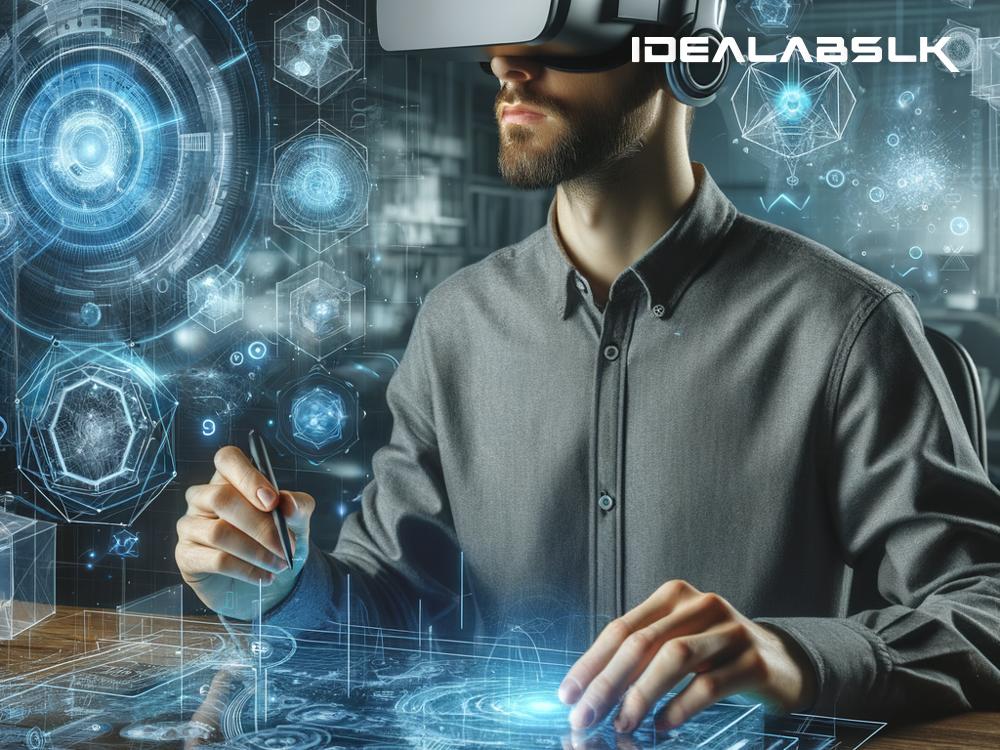The Future of Virtual and Augmented Reality in UX Design
In the realms of technology and design, Virtual Reality (VR) and Augmented Reality (AR) are like the two cool kids that everyone wants to hang out with. They're transforming how we experience the digital world, making it more immersive and interactive. For those of us in User Experience (UX) design, these technologies are like a playground with endless possibilities. But what does the future hold for VR and AR in UX design? Let's dive in and explore.
What are VR and AR?
First off, let's get our basics straight. Virtual Reality (VR) takes you to a completely different world, all through the magic of technology. Imagine putting on a headset and suddenly you're walking on Mars or exploring a castle. That's VR for you – a total immersion in a digital environment.
On the flip side, Augmented Reality (AR) blends the digital and real worlds. It adds, or 'augments', digital elements to your real environment. Think of Pokémon GO, where you catch virtual creatures that seem to exist in your actual surroundings, thanks to the screen of your smartphone.
The Promise of VR and AR in UX Design
The allure of VR and AR in UX design is undeniable. They offer new ways to engage users, making interactions more intuitive and enjoyable. But as we look to the future, we're just scratching the surface of what's possible.
-
Enhanced User Engagement: Imagine shopping for furniture and seeing how a new couch would look in your living room through AR, or learning how to fix your car in VR by actually performing the steps in a simulated environment. These experiences can make users more engaged with products or learning materials, leading to better retention and satisfaction.
-
More Personalized Experiences: VR and AR have the potential to offer highly personalized user experiences. Instead of a one-size-fits-all approach, UX designers can create environments or features tailored to individual preferences and needs. This personal touch could redefine user satisfaction.
-
Breaking Down Complex Information: Complex information can be daunting. VR and AR can simplify these complexities by visualizing data in an interactive and understandable way. Imagine walking through a 3D graph or watching a molecule assemble right in front of your eyes! This capability could revolutionize education and data analysis.
The Challenges Ahead
While the future looks bright, it's not without its hurdles. Technical limitations, such as the need for more powerful hardware and sophisticated software, currently put a cap on what's possible. Additionally, designing for VR and AR requires a different skill set than traditional UX design, including a good grasp of 3D modeling and human spatial awareness.
User adoption is another challenge. Despite the growing popularity of VR and AR, they're still not mainstream. Many users find wearing a VR headset cumbersome or experience motion sickness. As for AR, while more accessible, it often requires users to look through a device, which can disrupt the natural flow of interaction.
Finally, there's the issue of privacy and security. As these technologies become more sophisticated, they'll collect more data about users, raising concerns about how this information is used and stored.
Looking Towards the Future
Despite these challenges, the future of VR and AR in UX design is brimming with potential. Here's what we can expect:
-
Wider Adoption and Accessibility: As the technology matures and becomes more affordable, we'll see wider adoption of VR and AR. This will encourage more UX designers to explore these technologies, leading to innovative uses in various industries.
-
Improved Hardware and Software: Advances in hardware and software will make VR and AR experiences more immersive and less prone to causing discomfort. This will open up new possibilities for designers to create even more engaging and complex applications.
-
Integration with Other Technologies: Imagine VR and AR combined with artificial intelligence or real-time data analytics. This integration could lead to highly personalized and adaptive user experiences, transforming how we interact with digital environments.
-
Focus on Ethical Design: As designers explore the possibilities of VR and AR, there will be a growing emphasis on ethical design principles. This means creating experiences that are not only engaging but also respectful of users' privacy and well-being.
In Conclusion
The future of VR and AR in UX design is not just about creating cool, futuristic gadgets. It's about redefining how users interact with digital environments, making these interactions more intuitive, engaging, and personalized. While challenges exist, the potential benefits for both users and designers are immense. As we continue to explore and innovate, the boundaries of what's possible in UX design will expand, ushering in a new era of digital experiences. So, strap on your headsets, and let's dive into the future together!

